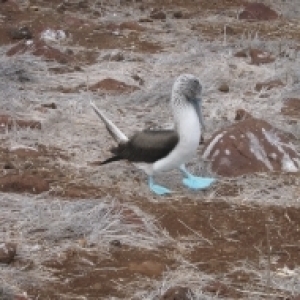Devil's toenails
All these fossils came from the Jurassic period and were some I found out fossiling today with the U3A geology group at Hock Cliff, Fretherne on the Severn Estuary.
The majority we found were these kind of extinct oysters – Gryphaea – a marine bivalve mollusc which lived on the sea bed in shallow waters, possibly in large colonies. The complete ones consist of two articulated valves: a larger gnarly-shaped shell (the "toenail") and a smaller, flattened shell, the "lid". The soft parts of the animal occupied the cavity between the two shells, just like modern oysters and you can see the prominent growth bands of the larger, curved shells which sat within the mud on the sea floor. There used to be a common folk belief that carrying one of these fossils could prevent rheumatism... so if I look a bit lopsided from now on it will be because of the weight of one (or two to just make sure) in my pocket

Comments
Sign in or get an account to comment.


